Related Research Articles
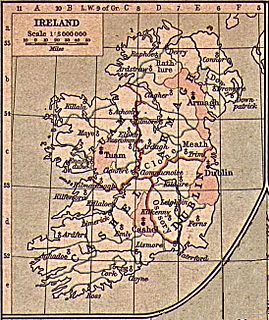
The Synod of Ráth Breasail was an Irish Catholic church council which took place in Ireland in 1111. It marked the transition of the Irish church from a monastic to a diocesan and parish-based church. Many Irish present day dioceses trace their boundaries to decisions made at the synod.
Cormac mac Art Ó Melaghlain, was King of Mide from around 1209/10 to 1239. He managed to win several notable victories over the Anglo-Normans and as a result was one of the more prominent and successful later Kings of Mide. Whatever gains Cormac made were not to prove long lasting however, even in his own reign, and the successor lords of Clann Cholmain were largely insignificant to the politics of later medieval Ireland.
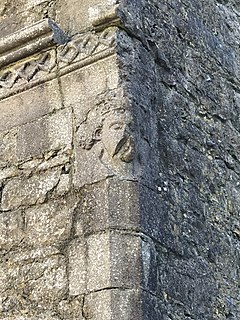
Cathal Crobhdearg Ua Conchobair (1153–1224), was a king of Connacht. He was the youngest son of the High King of Ireland Tairrdelbach Ua Conchobair and brother to the last fully recognized High King Ruadri Ua Conchobair. His own sons Aedh Ua Conchobair and Feidhlimidh Ua Conchobair were kings of Connacht after him.

Felim O'Connor was king of Connacht in Ireland, having been proclaimed king by Richard Mór de Burgh in 1230, he reigned proper from 1233 until 1265. Felim died in that year and was buried in the Dominican Priory in Roscommon which he founded in 1253. On his accession Felim inherited many problems from his predecessors, having his territory limited to essentially County Roscommon and having to deal with an increase of English and Welsh settlers in the kingdom. Felim attempted to maintain both a loyal and personal relationship with Henry III King of England, hoping he would limit the influence of de Burgh and other powerful Anglo-Norman magnates in Connacht, but this policy of appeasement produced few concrete results. During Felim's reign the lands of the Ua Conchobair became limited to the five 'royal cantreds', essentially Co. Roscommon. Felim notably adopted aspects of Anglo-Norman culture as seen in his English style effigy and seal.
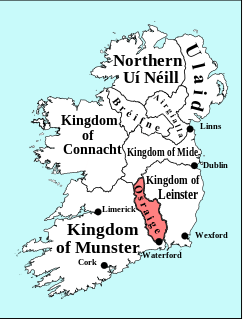
Osraige or Osraighe, Osraí, anglicized as Ossory, was a medieval Irish kingdom comprising what is now County Kilkenny and western County Laois, corresponding to the Diocese of Ossory. The home of the Osraige people, it existed from around the first century until the Norman invasion of Ireland in the 12th century. It was ruled by the Dál Birn dynasty, whose medieval descendants assumed the surname Mac Giolla Phádraig.

PS Queen Victoria was a paddle steamer built for the City of Dublin Steam Packet Company in 1838 and wrecked in 1853 with the loss of more than 80 passengers and crew.
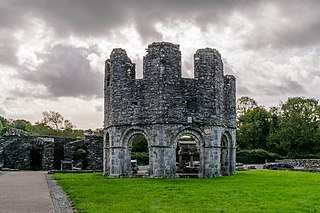
The Synod of Kells took place in 1152, under the presidency of Giovanni Cardinal Paparoni, and continued the process begun at the Synod of Ráth Breasail (1111) of reforming the Irish church. The sessions were divided between the abbeys of Kells and Mellifont, and in later times the synod has been called the Synod of Kells-Mellifont and the Synod of Mellifont-Kells.
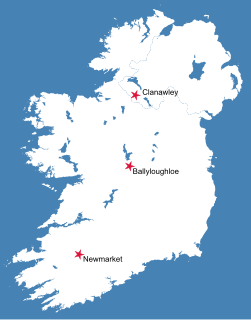
Mac Amhlaoibh and Mac Amhalghaidh are two different Gaelic patronymic names with different origins and meanings, but which share the same or similar Anglicisations. These Gaelic names are borne by at least three unrelated native Irish clans or septs.
Duach mac Dallán was the 6th king of the Irish kingdom of Uí Maine, around the 5th- or 6th-century.
The White Rod, White Wand, Rod of Inauguration, or Wand of Sovereignty, in the Irish language variously called the slat na ríghe and slat tighearnais, was the primary symbol of a Gaelic king or lord's legitimate authority and the principal prop used in his inauguration ceremony. First documented in the 12th century Life of Máedóc of Ferns, but assumed to have been used long before then, it is last documented in Ireland in the early 17th century. In Scotland the rod was used into the 13th century for the inauguration of its last Gaelic kings, and for the Norse-Gaelic Lords of the Isles into the 15th.

Drumacoo is a medieval ecclesiastical site and National Monument located in County Galway, Ireland.

Kilbennen or Kilbannon is a medieval ecclesiastical site and National Monument located in County Galway, Ireland.

Stradbally is a barony in County Laois, Republic of Ireland.

Cider, an alcoholic drink made from apples, is widely available in Ireland at pubs, off licences, and supermarkets. It has been made in regions of the island for thousands of years.
In Gaelic Ireland, a bruiden was a building offering shelter, drink and food, often translated as "hostel", "banqueting hall" or "inn."
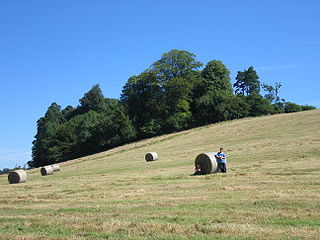
Loughtee Upper, or Upper Loughtee, is a barony in County Cavan, Republic of Ireland. Baronies were mainly cadastral rather than administrative units. They acquired modest local taxation and spending functions in the 19th century before being superseded by the Local Government (Ireland) Act 1898.

Saul Monastery is a former Christian monastery located in County Down, Northern Ireland. It is traditionally associated with the 5th-century Saint Patrick, who is said to have founded it shortly after arriving in Ireland, and having died there at the end of his missionary work.
References
- ↑ "Part 58 of Annals of Inisfallen". celt.ucc.ie.
- ↑ "Annales Hiberniae". celt.ucc.ie.
- ↑ "Patrick of Dublin – Elizabeth Boyle".
- ↑ society, Irish archaeological and Celtic (September 14, 1842). "Publications". Society. – via Google Books.
- ↑ "The Writings of Bishop Patrick, 1074-1084". Dublin Institute for Advanced Studies. September 14, 1955 – via Google Books.
- ↑ Lettens, Jan. "Smalls wreck [+1100]". Wrecksite. Retrieved 21 December 2014.
- ↑ "French archaeologist discover 12th century shipwreck". Antara News. 24 February 2012. Retrieved 7 June 2015.